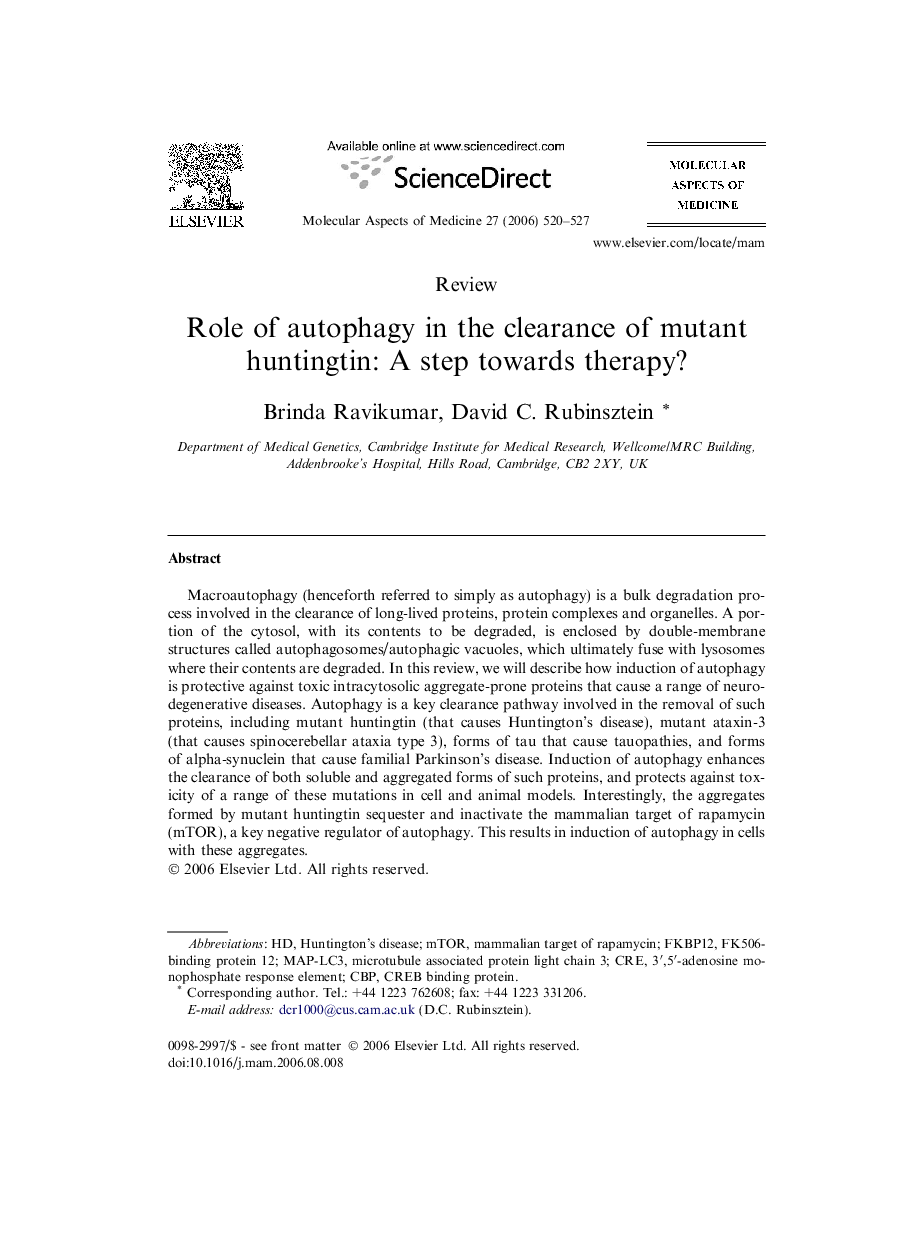| Article ID | Journal | Published Year | Pages | File Type |
|---|---|---|---|---|
| 1995856 | Molecular Aspects of Medicine | 2006 | 8 Pages |
Macroautophagy (henceforth referred to simply as autophagy) is a bulk degradation process involved in the clearance of long-lived proteins, protein complexes and organelles. A portion of the cytosol, with its contents to be degraded, is enclosed by double-membrane structures called autophagosomes/autophagic vacuoles, which ultimately fuse with lysosomes where their contents are degraded. In this review, we will describe how induction of autophagy is protective against toxic intracytosolic aggregate-prone proteins that cause a range of neurodegenerative diseases. Autophagy is a key clearance pathway involved in the removal of such proteins, including mutant huntingtin (that causes Huntington’s disease), mutant ataxin-3 (that causes spinocerebellar ataxia type 3), forms of tau that cause tauopathies, and forms of alpha-synuclein that cause familial Parkinson’s disease. Induction of autophagy enhances the clearance of both soluble and aggregated forms of such proteins, and protects against toxicity of a range of these mutations in cell and animal models. Interestingly, the aggregates formed by mutant huntingtin sequester and inactivate the mammalian target of rapamycin (mTOR), a key negative regulator of autophagy. This results in induction of autophagy in cells with these aggregates.
